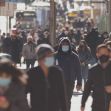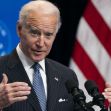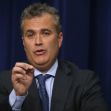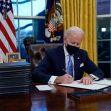As projections of coronavirus skyrocket to 500,000-plus, President Joe Biden issued a series of executive orders designed to curtail the pandemic as much as presidential authority will allow without congressional action.
Before signing the orders, the president spoke some bitter truths to his nation of constituents, stating, “Things are going to continue to get worse before they get better. The memorial we held two nights ago will not be our last one, unfortunately. There are moments in history when more is asked of a particular generation, more is asked of Americans than other times. We are in that moment, now.”
The executive orders are part of the “National Strategy for the COVID-19 Response and Pandemic Preparedness,” a 198-page document that included many specific measures regarding travel, testing and vaccine supplies, and elimination of the disparities in health care access that have resulted in higher infections and deaths due to such factors as ethnicity race, geography and disability.
The preludes to his Executive Orders, issued during his first two days in office, emphasize that all White House directives will be based on science and written in consultation with the Centers for Disease Control and Prevention (CDC), the Surgeon General, and the National Institutes of health. They stress the effectiveness of and need for the proven measures of mask-wearing, physical distancing, appropriate ventilation and timely testing. The preludes are followed by new instructions that affect federal lands, as well as domestic and targeted international travel. All require consultation and communication with the public and private affected parties.
His “Executive Order on Protecting the Federal Workforce and Requiring Mask Wearing,” issued January 20, requires compliance with CDC guidelines by all on-duty or on-site Federal employees, Federal contractors and all persons on Federal land, including national parks. It also requires the creation of a testing plan for Federal workers.
The following day, Biden issued an “Executive Order on Promoting COVID-19 Safety in Domestic and International Travel.” This order requires that masks be worn in “airports, commercial aircraft, trains, public maritime vessels, including ferries, and intercity bus services.”
Moving to international travel, the same order will require that all travelers seeking to enter our country produce proof of a recent negative COVID-19 test and comply with all CDC guidelines. Being sensitive to countries where testing is unavailable, he directed government officials to also study the alternate protective measures such as testing, self-quarantine, and self-isolation. He also directed the Secretary of State and other appropriate officials to consult with foreign governments, the World Health Organizations, and other agencies to create guidelines for safe international travel.
This order next addressed land travel, and once again stressed the need for diplomatic consultation with Mexico and Canada so that safety protocols for land ports of entry could be created. It then moved on to sea travel and asked relevant government officials to submit a plan for safe entry from seaports within 14 days.
With directives completed for all forms of travel, he next asked his COVID-19 team to link coronavirus vaccinations to International Certificates of Vaccination, a useful tracking tool.
Earlier, President Biden announced that these efforts and other related virus-fighting activities will be coordinated by the new COVID-19 Response Coordinator, a position created on January 20, designed to manage the government-wide effort to combat the disease. The Coordinator is to receive recommendations from Secretaries of relevant organizations to make recommendations to him for additional health measures for domestic travel.
In all these efforts, the President stresses the critical need for consultation, directing all federal agency heads to consult with all interested parties, including State, local, Tribal and territorial officials as well as representatives from industry, unions and transportation consumers. It also promises “support” to these entities so they can better encourage widespread mask-wearing and physical distancing on public transportation modes.
Biden’s plan in this and other Executive Orders hopes to direct more money to states, which have consistently stressed the need for additional funds. Biden’s plan says that the White House will work to persuade Congress to cover the cost of vaccination and related health necessities.
Related orders concerned developing new plans to improve data gathering, reopen schools, and develop new drugs that “can be easily manufactured, distributed and administered, both domestically and internationally.”






